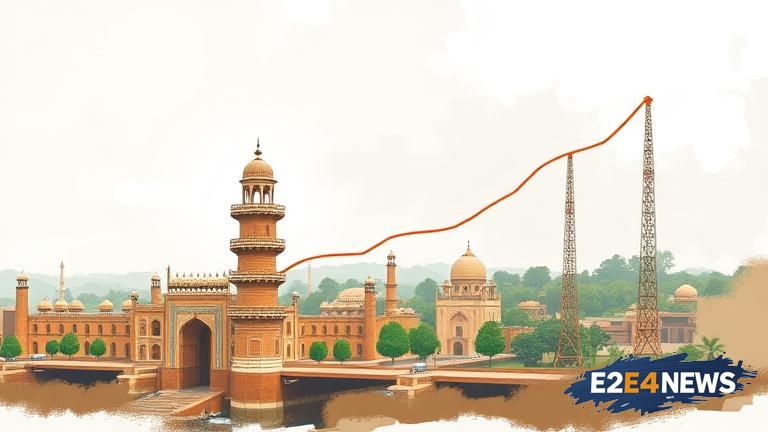India’s economic growth has been a topic of discussion in recent times, with the country’s GDP expected to grow at a rate of 6.5-7% in the current fiscal year. This growth is driven by a rebound in consumer spending and investment, which has been fueled by a combination of factors, including a decline in COVID-19 cases, a pickup in vaccination rates, and a series of policy measures announced by the government. The Indian government has taken several steps to boost economic growth, including a reduction in corporate tax rates, an increase in public investment, and a series of reforms aimed at improving the business environment. The country’s manufacturing sector has also shown signs of recovery, with the PMI (Purchasing Managers’ Index) rising to a 10-month high in December. The services sector, which accounts for a significant portion of India’s GDP, has also seen a pickup in activity, driven by a rebound in demand for services such as tourism, hospitality, and transportation. The agricultural sector, which is a key driver of rural demand, has also shown signs of recovery, with the monsoon season expected to be normal this year. The government has also announced a series of measures to boost rural demand, including an increase in the minimum support price for crops and a hike in rural employment guarantee scheme outlays. Despite these positive trends, there are still several challenges that India’s economy faces, including a high fiscal deficit, a large trade deficit, and a decline in foreign investment. The country’s banking sector is also facing challenges, with a high level of non-performing assets and a decline in credit growth. The government has announced a series of measures to address these challenges, including a recapitalization plan for public sector banks and a series of reforms aimed at improving the regulatory environment. The Reserve Bank of India (RBI) has also taken several steps to boost economic growth, including a reduction in interest rates and an increase in liquidity. The RBI has also announced a series of measures to improve financial inclusion, including a hike in the limit for contactless transactions and a reduction in charges for digital payments. Overall, while there are still several challenges that India’s economy faces, the country’s growth prospects look positive, driven by a rebound in consumer spending and investment. The government’s policy measures and the RBI’s monetary policy actions are expected to support economic growth in the coming months. The country’s economic growth is also expected to be driven by a series of structural reforms, including the implementation of the Goods and Services Tax (GST) and the Insolvency and Bankruptcy Code (IBC). These reforms are expected to improve the business environment and boost investment in the country. The government has also announced a series of measures to boost exports, including a reduction in tariffs and a hike in export incentives. The country’s exports have shown signs of recovery, driven by a pickup in demand from key markets such as the US and the EU.
